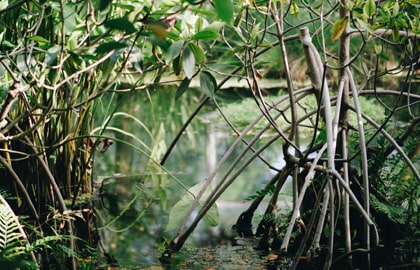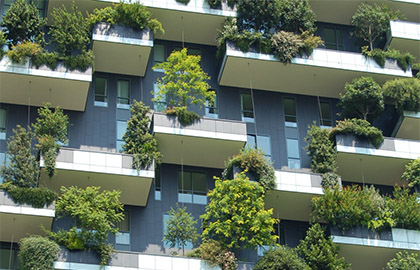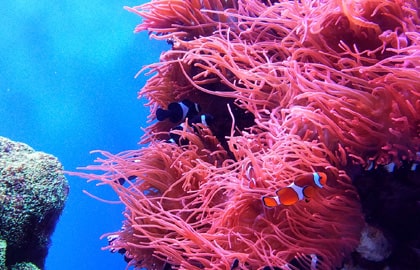Shradha Gupta
FEMA defines Nature-based Solutions (NbS) as sustainable approaches integrating natural features or processes into the built environment to enhance adaptation and resilience. These solutions leverage natural elements to address climate change, reduce flood risk, improve water quality, protect coastal properties, restore wetlands, stabilize shorelines, mitigate urban heat, and expand recreational areas. For instance, coastal flooding, often managed with man-made structures like sea walls, can be mitigated by utilizing ecosystem services such as planting mangroves. These trees not only diminish storm impacts but also support biodiversity by providing habitats for various species.
NbS offer substantial economic and non-economic advantages, often at a lower cost than conventional infrastructure. They contribute to economic growth, create green jobs, increase property values, and improve public health. Moreover, NbS are crucial for climate change adaptation and enhancing resilience in landscapes and communities, offering a multifaceted solution to climate change, biodiversity loss, and land degradation. NbS also foster a deeper connection with our landscapes, recognizing natural formations like wetlands as integral to our environment and potential solutions to our challenges. However, it’s essential to note that not all plantings qualify as NbS. For example, introducing non-native, harmful trees that disrupt local ecosystems would not yield biodiversity benefits.
Examples of Nature-based Solutions (NbS) include:

Restoring forests and wetlands in catchments to secure water supplies, produce forest products, and protect against floods, soil erosion, and landslides.

Integrating green roofs, walls, and trees in cities to mitigate heatwaves, manage stormwater, reduce pollution, and enhance mental and physical health.

Restoring coastal habitats like mangroves, reefs, and salt marshes to shield communities from storm surges and erosion, while also sequestering carbon and aiding climate change mitigation.
Constructed wetlands are another NbS example. Wetlands offer many ecosystem services such as food, shelter materials, and water. As natural wetlands have declined, constructed wetlands have emerged especially as a decentralized solution for wastewater treatment. They are cost-effective, easy to implement, and manageable by local communities. It aligns with Sustainable Development Goal 6 for clean water and sanitation. The World Bank also supports wetland projects for disaster risk management and flood reduction. For example, in Colombo, Sri Lanka, they are supporting a project pioneering the use of urban wetlands as a nature-based solution. Wetlands reduce flood risk by holding excess water, but the holding capacity of Colombo’s wetlands dropped by 40% over a decade. At the same time, climate change and sea-level rise increased the city’s vulnerability to flooding. The project used green and grey infrastructure to restore and protect the wetland and maintain its hydraulic integrity. This reduced flood risk for more than 200,000 city residents and provided the entire city with a better quality of life. The wetlands also sequester carbon and regulate the local climate, which has helped reduce the use of air conditioning near wetland areas. The project improved water quality and wastewater treatment, and the city’s Beddagana wetland has been turned into a park and wildlife sanctuary.

During my last semester at UC Berkeley, wetlands have been a recurring topic in my courses, highlighting their role in pollution absorption and natural water treatment. Growing up in India, I witnessed the challenges communities face in accessing and managing water, particularly the pollution of the Ganga River. This motivated me to pursue Environmental Engineering to be part of the solution. Learning about the potential of wetlands as water treatment systems has been fascinating. I aim to learn and contribute to NbS, especially constructed wetlands. I believe by revisiting our historical harmony with nature and exploring diverse cultural practices, we can reconnect with our landscapes and leverage wetlands and other habitats for climate change mitigation, water security, well-being, and livelihood protection.
Additional information:
For more information on Nbs, watch this video:
THE FUTURE WE CAN AND MUST CHOSE: NATURE-BASED SOLUTIONS
You can also read these evidence-based guidelines around what constitutes successful, sustainable NbS.
Sources:
https://www.naturebasedsolutionsinitiative.org/what-are-nature-based-solutions
Thank you for a great post Shradha!
I first wanted to make a comment on the idea of green roofs. It’s not something I’ve run into often, the only similar thing I’ve experienced is the Sale Force Tower park. But, knowing that the urban heat island effect is a hot topic in city planning and even EJ, I hope to see it’s popularity increase. There have even been appointed “heat officer” officials who work to face similar problems in hot areas such as L.A. and Phoenix.
But, I also wanted to come here to plug an ERG course! It’s a seminar, so it can be hard to get into, but it’s called Natural Climate Solutions and Global Change taught by Lara Kuppers. As the title suggests, its a course which dives deep into natural solutions for topics in global change.
Such a great read Shradha!
Factoring in the ecosystem services that nature-based solutions provide is finally starting to be factored into planning and it’s a super step in the right direction. I’m happy to hear that you plan on heading back to India, equipped to make change. We really need folks like you.
Despite knowing the benefits of nature-based solutions and often incorporating it in new master plans, infrastructure projects are continuing to destroy these crucial ecosystems every day back in India. And then technocratic systems are incorporated to come in as “solutions.” An example of this is in Goa where I grew up. The capital, Panaji was called “Ponji” – the city that never flooded. Mangroves soaked up the storm surge that this coastal city encountered. However, these ecosystems have been disrupted, fragmented, and destroyed with highway networks running through them. With increased flooding, planners are talking about incorporating sea walls. Advocacy in the form of live art installations within the dying mangrove ecosystem by a group called the Earthivist Collective has brought some awareness to the issue. This strength of interdisciplinarity as we shift towards NbS being more widely incorporated is an element that needs to be leveraged if we are to truly see a systemic shift towards these ways of planning.
I’m very surprised that I have never really focused in on the term “Nature-based Solutions” until now, especially considering I completed an undergraduate degree with a sustainability focus. I’ve heard of and talked about the concepts included in it, but not the term itself. I find these sorts of tools to be very powerful and more ethical than many other attempts to curb climate change. Restorative justice has become a major theme I look for when change is made, whether it be environmental or related to another key life theme. By using the natural power of natural resources, you are giving back to the earth by creating a setting where it can function as intended. This concept can be applied and carefully used where people have been removed from their land as well by redistributing access to goods just as access to certain environmental features is given back to the land itself.
I found your initial example of replacing seawalls with nature-based systems with similar ecosystem services particularly relevant to me. My hometown of Long Beach has had a seawall my entire life, with significant impacts on the local water quality at the beaches. My undergraduate thesis examined the potential of restoring some of the wetlands that had previously been endemic to the area, and how they could serve as flood mitigation (and provide water filtration as well). I found that although it is a very compelling concept worth pursuing, it is critical that it not be viewed as a silver bullet – in my case, the amount of wetland restoration I found plausible would not be enough to mitigate all the flood concerns of the now heavily-urbanized watershed, and if reconnected to the local rivers the wetlands would likely be overwhelmed and suffer significant degradation at the first major rain event. Which is not to say it shouldn’t be pursued, only that the limits of ecosystem services must be made clear and such tactics must be implemented thoughtfully.